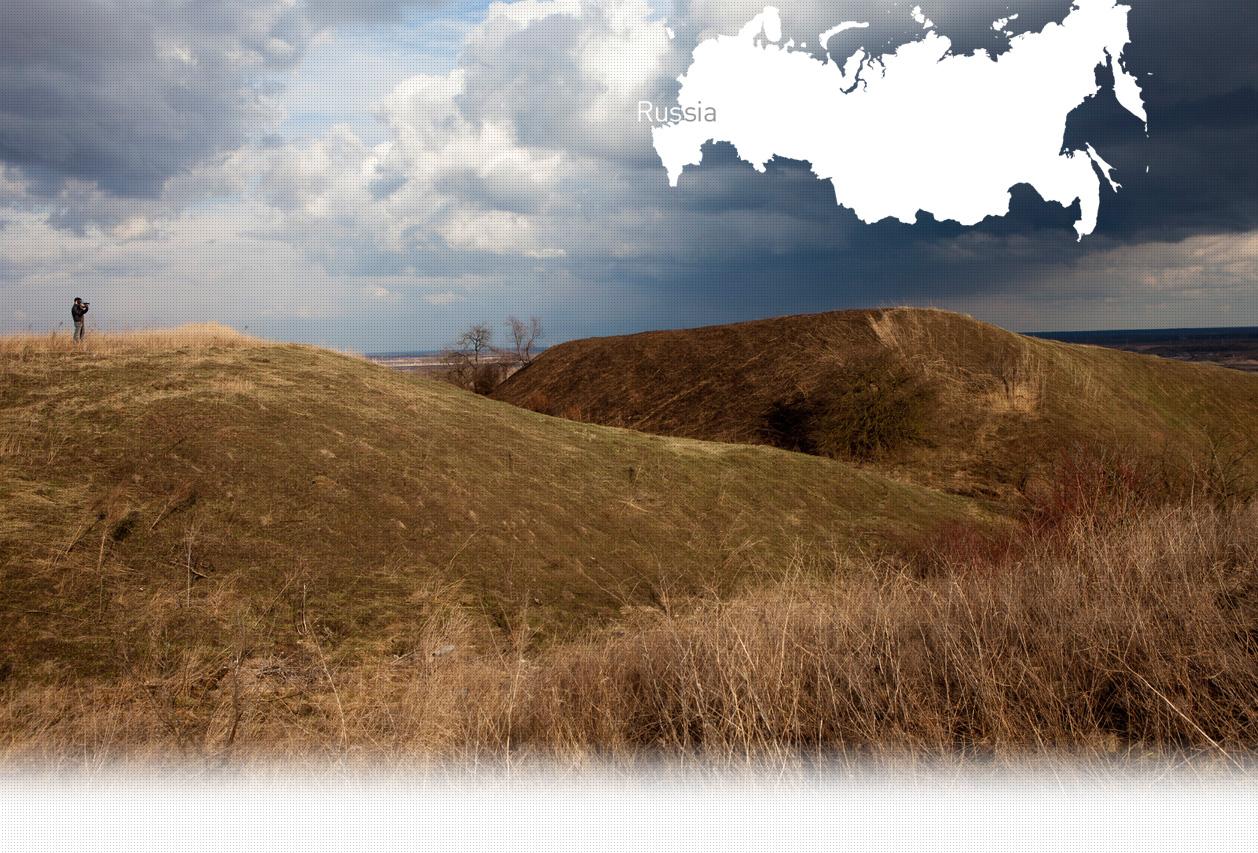

1 Killing site(s)
Yulia P. evokes: “The German field kitchen was installed in our yard and some Germans stayed with us. They were the soldiers who arrived from Smolensk to take a rest from the battles. They didn’t ask us the permission; they just came and said that there would be a kitchen in our yard. But as I think about it today, I can say that it might have saved our lives. Because on the day when the Gypsies were shot, the SS soldiers came to our house as well. They wanted to take us for the general gathering near the lake. But, the Germans who stayed at our house said that we were Russians and we could stay at home. I know that the majority of Roma people were shot this day.” (Testimony n°61, interviewed on December 2, 2009 in Aleksandrovka)
“Even though I showed my papers, the German officer didn’t believe that I was Russian and he didn’t want to let me go. At the end, at about 3pm the pit had been dug and all Gypsies were taken to the barn located close to the pit. All the territory was cordoned off by German soldiers. The Germans took the Gypsies to the barn as they were cattle. Those who refused to move forward were beaten and pulled by force into the barn. The shooting started at 3pm. At least 70 Gypsies, including women, children and elder people were shot on my eyes. […] Before being killed the Gypsies were forced to undress. Some kept the underwear and others had to stay completely naked. Then, they were taken from the barn to the pit located 20-30m away. They were taken to the pit in families. The shooting was conducted by one German soldier who fired with a gun.” [Deposition of a local resident, Lidia K., given to the State extraordinary commission on October 10, 1943; RG-22.002M: 7021-44/1091]
Aleksandrovka is a village, located 8 km north of Smolensk. The first records about the Roma in the Smolensk region go back to the 19th century. In 1937, a kolkhoz “The Stalin Constitution” was established in the village to settle down the Roma nomadic people from the Smolensk region, who weren’t able to be integrated into the October farm due to lack of the land. The majority of the population was Roma. There was a Romani school. The village was occupied by Germans in summer 1941.
The Roma could continue living in their houses until they were executed on April 24, 1942. The execution was conducted by SS Einsatzgruppe B. On the night before the execution, the village was cordoned off and all the residents, including the Roma from the nearing village of Devkino, were gathered at the place close to the lake. After a selection, which was made according to the lists provided by local administration, the Roma people were driven to the execution, located in the woods, and the Russians were released. Once on the site, the men were separated from the women and children and were shot the first. Prior to be shot, all Roma were forced to undress inside the barn, located 20-30m away. According to the archives and local witnesses, the small children were thrown in the pit alive. Some women and children managed to released claiming being Russians, as they had light hair and skin.
Do you have additional information regarding a village that you would like to share with Yahad ?
Please contact us at contact@yahadinunum.org
or by calling Yahad – In Unum at +33 (0) 1 53 20 13 17